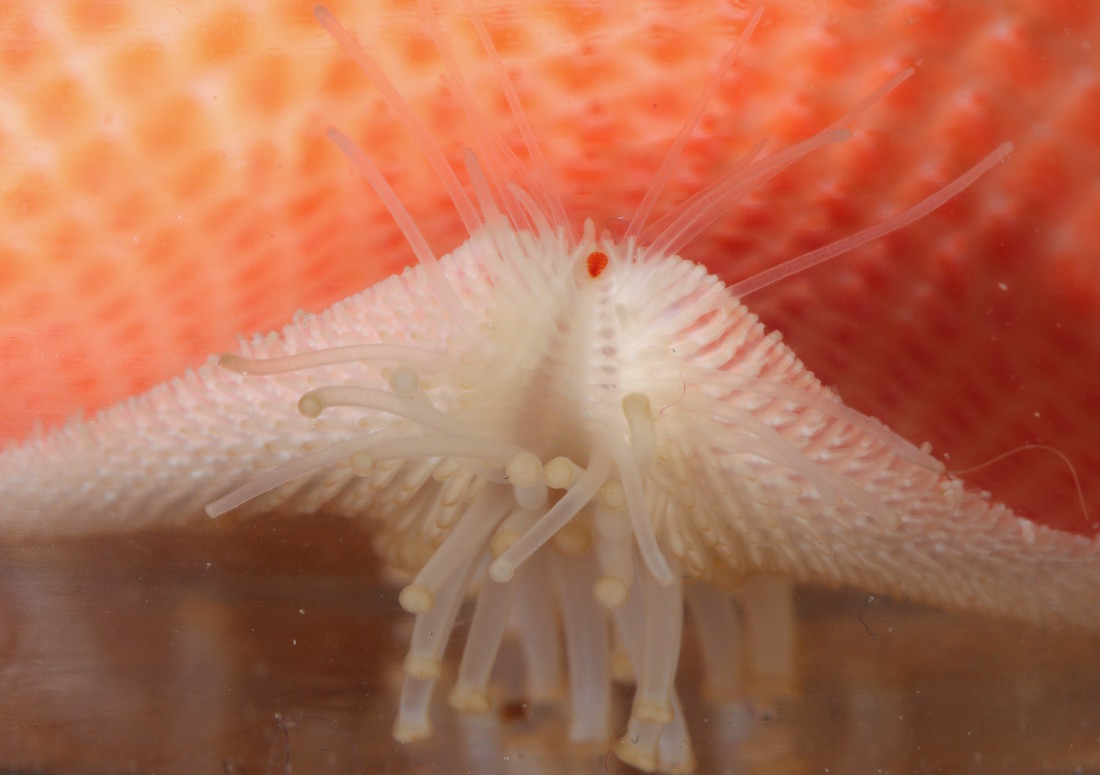Among the most captivating entities in the cosmos, the starfish stands as a marvel with no discernible semblance to traditional eyes. The enigma unfolds: how do starfish, devoid of visual organs, perceive their world? Delve into the intricacies of their sensory prowess to unravel the mysteries of starfish vision.
Does a Starfish Have Eyes?
Though initially lacking the appearance of eyes, starfish harbor a rudimentary visual ability, albeit not on par with our intricate ocular system. Remarkably, starfish exhibit sensory prowess through specialized structures known as eye spots. While their visual acuity is limited and fine details elude them, these eye spots are attuned to discerning light and darkness. Positioned at the extremities of their arms, a starfish’s eye spots are distributed in accordance with the number of arms it possesses; thus, a five-armed starfish bears five of these light-sensitive loci, each situated at the very tip of its arms.
Starfish Eye Spots

Embedded beneath the starfish’s skin, the eye spots exhibit a subtle presence, yet they remain observable. When tenderly cradled, starfish frequently elevate the tips of their arms, unveiling a distinct sight. Direct your gaze to the ultimate tip, and you shall behold a distinctive dark or crimson puncture. Behold, these are the starfish’s eyes, delicate yet perceptive.
Hence, the portrayal of a starfish adorned with eyes upon a central facial form is, in fact, an inaccuracy. Authentic starfish anatomy differs; they glean their perspective through their arms, not from a mid-body countenance. Alas, the depiction of such an arrangement often graces the canvases of cartoonists, simplifying a complex reality for artistic convenience.
Structure of the Starfish Eye
The starfish’s ocular apparatus is astonishingly minute. In the instance of the Blue Starfish, its eyes measure a mere half a millimeter in diameter. Nestled on the ventral side of each arm resides a unique arrangement: a groove crafted from tube feet that propels their motion.
Comprising numerous light-gathering units, the eye is perched at the terminus of every tube foot on each arm. An intricate composite structure akin to an insect’s compound eye, it deviates from the typical ocular paradigm by eschewing a lens for light manipulation. Consequently, this compound eye’s capabilities are tailored to discerning rudimentary facets like light, darkness, and crucial landmarks like expansive coral reefs. The ambit of its perception remains confined to these rudimentary elements, unable to extend its vision to more intricate details beyond these modest confines.
What the Starfish Can See
The world of colors eludes starfish, as they lack the color-detecting cones found in human eyes, rendering them color blind. Thus, their visual domain is confined to the realms of light and darkness. Moreover, their ocular machinery operates at a leisurely pace, rendering them incapable of perceiving swiftly moving entities. Rapidly swimming objects nearby remain beyond their purview.
Detail, too, evades their gaze, for their light-sensitive cell count remains sparse. Astounding revelations have arisen from experiments showcasing their ability to discern expansive structures, defying prior assumptions that limited their perception to mere contrasts of light and darkness.
Starfish vision boasts a broad field, encompassing an expansive view. Were their eyes unobstructed, a panoramic 360-degree vista could unfold before them. Yet, their perceptual scope can be modulated using the tube feet adorning their arms. These appendages wield the power to curtail their vision, strategically obstructing their sight. While starfish may not possess the intricate visual acuity of color or fine detail, their vision proves adequate for their navigational aims, deftly guiding them towards desired destinations, be it the embrace of a rocky haven or the bounty of a coral reef‘s repast.
References
- Featured Image: Dereck Keats.
